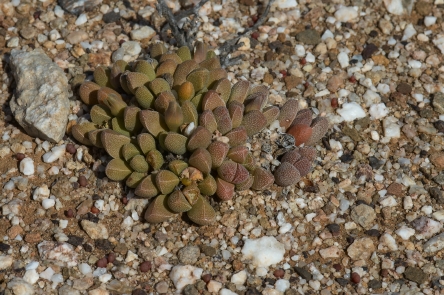Photographed 26 September 2006 near the eastern entrance to Aneysberg Nature Reserve. This is near to the south-western border of the area occupied by the genus.

When looking up descriptions of plants, one often comes across pieces of botanical jargon, terms that are either used only in botany or have a specific meaning there. Of course there are books and internet sites where one can find the meaning of these terms, but the explanations are often in arcane language and usually there are no illustrations. (“And what is the use of a book,” thought Alice, “without pictures or conversation?” ― Lewis Carroll, Alice’s Adventures in Wonderland). In 1993 the British Cactus and Succulent Society published a booklet called “Glossary of botanical terms with special reference to Succulent Plants”, compiled by Urs Eggli. This useful publication is now out of print, but second hand copies can be found on the internet. Unfortunately -like in other publications of this kind- the explanations are accompanied by a line drawing at best, so that it is not always easy to relate the information to a real plant. When thinking about this, I wondered if it might not be a good idea to publish a post occasionally explaining some botanical term and using photos to show what is meant.
To kick off, let’s start with a type of inflorescence that is very common in the Aloaceae family (Aloe, Astroloba, Gasteria, Haworthia, Poellnitzia). It is called a raceme, in which inflorescence the main axis does not end in a flower at the top and the flowers start to open from the bottom upwards. Below left you see a drawing of this. On the right you see a spike, which is a raceme in which the separate flowers have no stalks.
The 3 pictures below show racemes of (from top to bottom) Aloe ferox, Astroloba bullulata and Ornithogalum juncifolium.